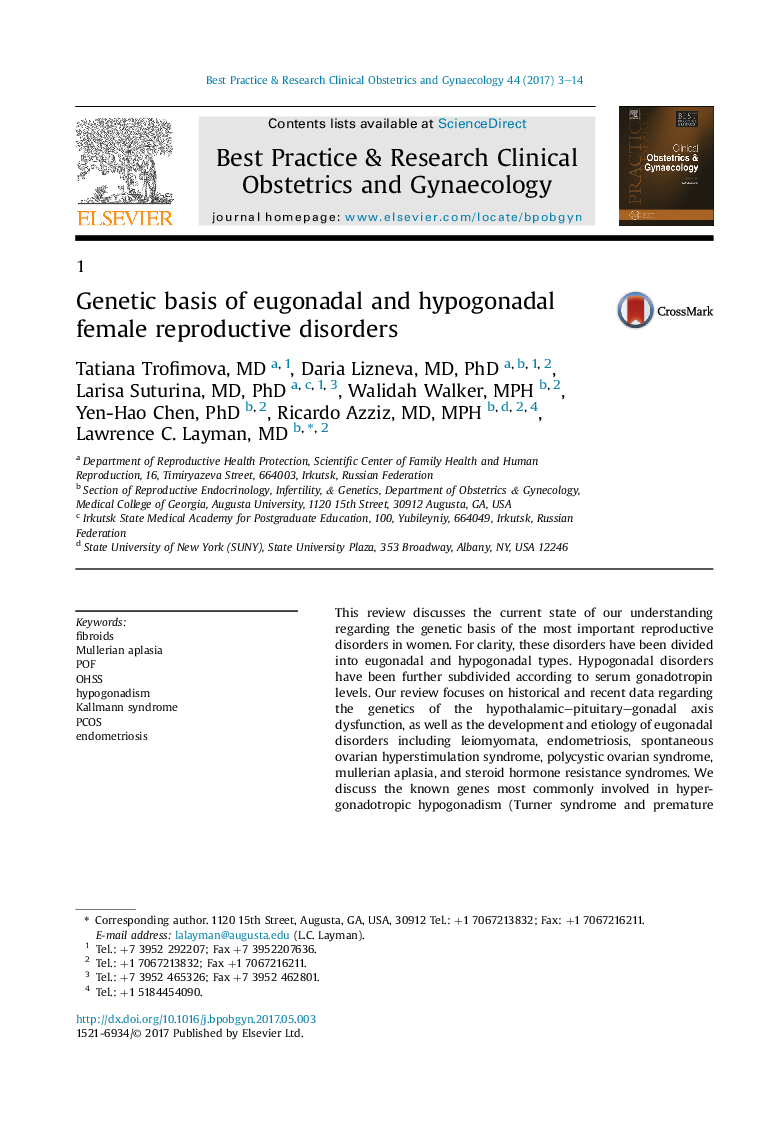| Article ID | Journal | Published Year | Pages | File Type |
|---|---|---|---|---|
| 8776614 | Best Practice & Research Clinical Obstetrics & Gynaecology | 2017 | 12 Pages |
Abstract
This review discusses the current state of our understanding regarding the genetic basis of the most important reproductive disorders in women. For clarity, these disorders have been divided into eugonadal and hypogonadal types. Hypogonadal disorders have been further subdivided according to serum gonadotropin levels. Our review focuses on historical and recent data regarding the genetics of the hypothalamic-pituitary-gonadal axis dysfunction, as well as the development and etiology of eugonadal disorders including leiomyomata, endometriosis, spontaneous ovarian hyperstimulation syndrome, polycystic ovarian syndrome, mullerian aplasia, and steroid hormone resistance syndromes. We discuss the known genes most commonly involved in hypergonadotropic hypogonadism (Turner syndrome and premature ovarian failure) and hypogonadotrophic hypogonadism (Kallmann syndrome and normosmic types). In addition, we summarize the current clinical testing approaches and their utility in practical application.
Related Topics
Health Sciences
Medicine and Dentistry
Obstetrics, Gynecology and Women's Health
Authors
Tatiana MD, Daria MD, PhD, Larisa MD, PhD, Walidah MPH, Yen-Hao PhD, Ricardo MD, MPH, Lawrence C. MD,
